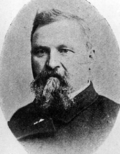| Lieutenant Governor of Florida | |
|---|---|
 | |
 | |
| Government of Florida | |
| Member of | Florida Executive Branch Florida Cabinet |
| Residence | None official |
| Seat | Tallahassee, Florida |
| Appointer | Direct election |
| Term length | Four years, renewable once consecutively |
| Constituting instrument | Constitution of Florida |
| Inaugural holder | William W. J. Kelly |
| Formation | 1865 |
| Succession | First (gubernatorial line of succession) |
| Salary | $125,000 (per year) |
The lieutenant governor of Florida is a statewide constitutional office in the executive branch of the U.S. state of Florida. It is the second highest-ranking official in the state government. The lieutenant governor is elected on a ticket with the governor for a four-year term.
Contents
- History
- List of lieutenant governors
- List of acting lieutenant governors
- See also
- References
- External links
Official duties dictated to the lieutenant governor under the present Florida Constitution are to serve as the acting governor in the absence of the governor from the state or the disability of the governor, or to become governor in the event of the governor's death, resignation or removal from office via impeachment.
Three lieutenant governors went on to serve as Governor of Florida: Marcellus Stearns, Wayne Mixson, and Buddy MacKay.
The office has been held by Jay Collins since his appointment by Governor Ron DeSantis on August 12, 2025, following predecessor Jeanette Nuñez's resignation to become interim president of Florida International University. [1] [2]






















